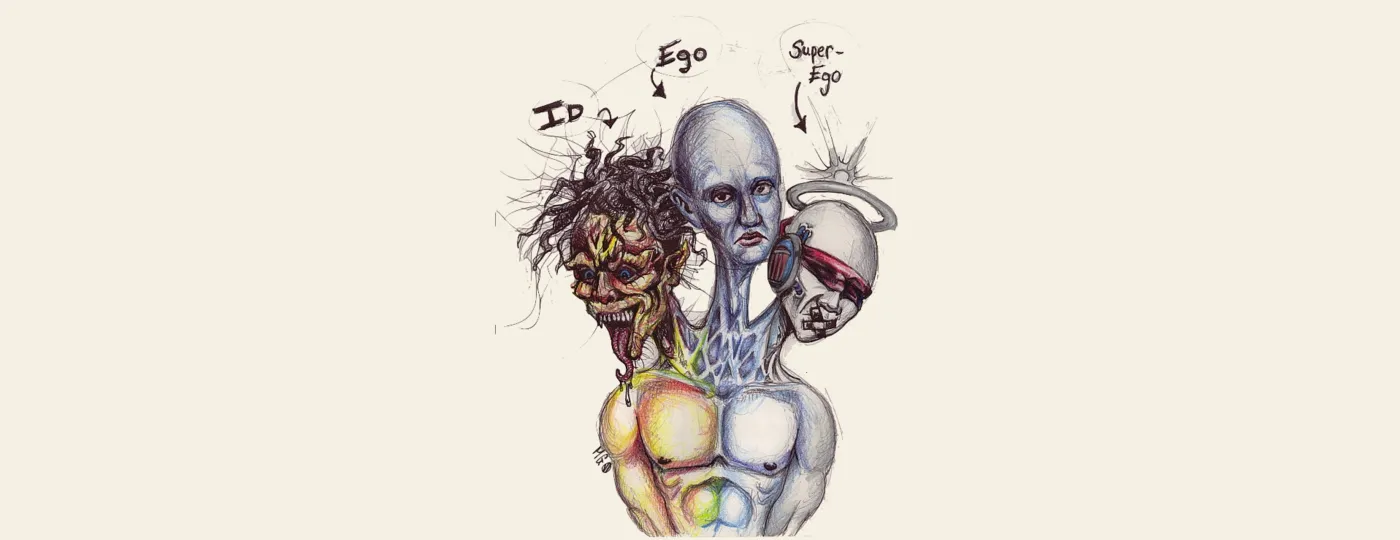“The Ego and the Id” (1923) is a prominent paper (also book) by Sigmund Freud, the founder of psychoanalysis.
The book formulates the structural personality model in which he articulates a map of the different layers which comprise the human soul: the conscious, unconscious and preconscious which correlate with the faculties of ego, id and super-ego.
Captures
Chapter 1: Consciousness and What is Unconscious
- ‘Being conscious’ is in the first place a purely descriptive term, resting on perception of the most immediate and certain character.
- On the contrary, a state of consciousness is characteristically very transitory; an idea that is conscious now is no longer so a moment later, although it can become so again under certain conditions that are easily brought about.
- Powerful mental processes or ideas exist which can produce all the effects in mental life that ordinary ideas do (including effects that can in their turn become conscious as ideas), though they themselves do not become conscious.
- The state in which the ideas existed before being made conscious is called by us repression, and we assert that the force which instituted the repression and maintains it is perceived as resistance during the work of analysis.
- We see, however, that we have two kinds of unconscious-the one which is latent but capable of becoming conscious, and the one which is repressed and which is not, in itself and without more ado, capable of becoming conscious.
- The latent, which is unconscious only descriptively, not in the dynamic sense, we call preconscious; we restrict the term unconscious to the dynamically unconscious repressed;
- We have formed the idea that in each individual there is a coherent organization of mental processes; and we call this his ego. It is to this ego that consciousness is attached; the ego controls the approaches to motility-that is, to the discharge of excitations into the external world; it is the mental agency which supervises all its own constituent processes, and which goes to sleep at night, though even then it exercises the censorship on dreams.
- We have come upon something in the ego itself which is also unconscious, which behaves exactly like the repressed -that is, which produces powerful effects without itself being conscious and which requires special work before it can be made conscious.
- We recognize that the Ucs. does not coincide with the repressed; it is still true that all that is repressed is Ucs., but not all that is Ucs. is repressed.
Chapter 2: The Ego and the Id
- The question, ‘How does a thing become conscious?’ would thus be more advantageously stated: ‘How does a thing become preconscious?’ And the answer would be: ‘Through becoming connected with the word-presentations corresponding to it.’ These word-presentations are residues of memories; they were at one time perceptions, and like all mnemic residues they can become conscious again.
- the distinction between Cs. and Pcs. has no meaning where feelings are concerned; the Pcs. here drops out-and feelings are either conscious or unconscious.
- the ego does not completely envelop the id, but only does so to the extent to which the system Pcpt. forms its [the ego’s] surface,
- The repressed is only cut off sharply from the ego by the resistances of repression; it can communicate with the ego through the id.
- It is easy to see that the ego is that part of the id which has been modified by the direct influence of the external world through the medium of the Pcpt.-Cs.; in a sense it is an extension of the surface-differentiation.
- The ego represents what may be called reason and common sense, in contrast to the id, which contains the passions.
- The ego is in the habit of transforming the id’s will into action as if it were its own.
- We have evidence that even subtle and difficult intellectual operations which ordinarily require strenuous reflection can equally be carried out preconsciously and without coming into consciousness. Instances of this are quite incontestable; they may occur, for example, during the state of sleep, as is shown when someone finds, immediately after waking, that he knows the solution to a difficult mathematical or other problem with which he had been wrestling in vain the day before.
- The faculties of self-criticism and conscience-mental activities, that is, that rank as extremely high ones-are unconscious and unconsciously produce effects of the greatest importance;
Chapter 3:
Summary
Conscious
Unconscious
Preconscious
